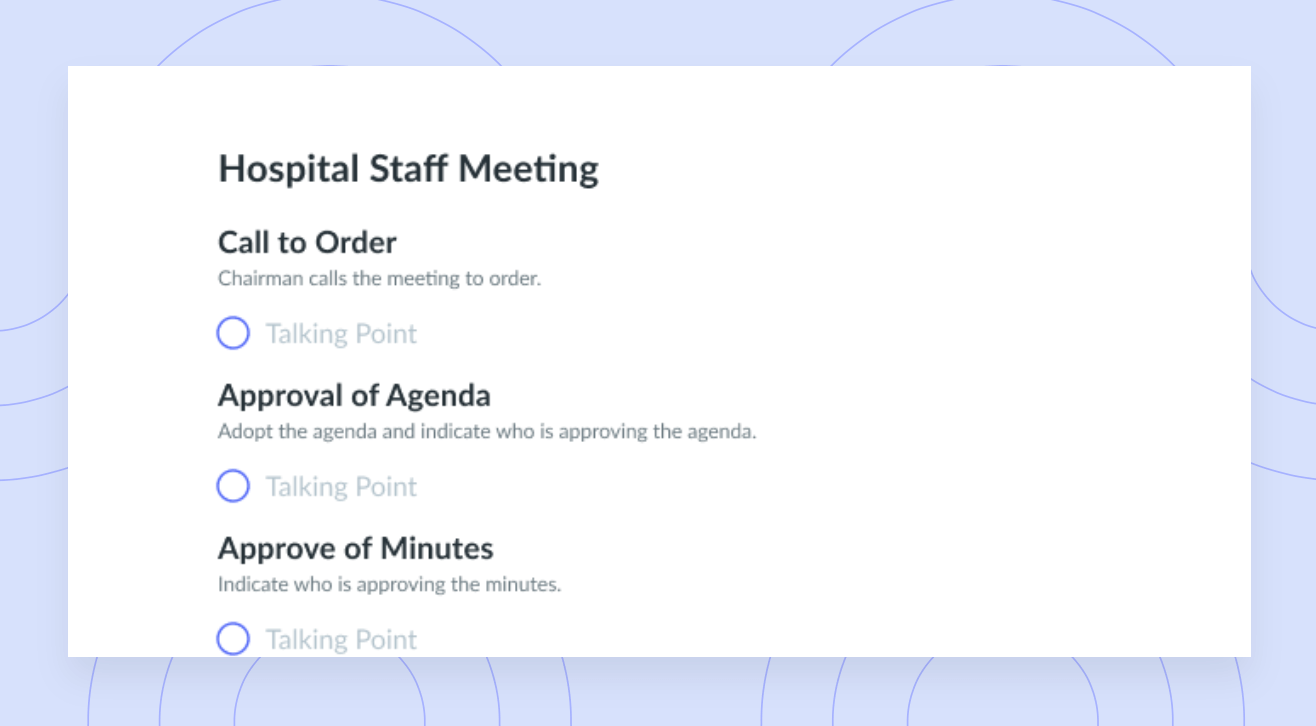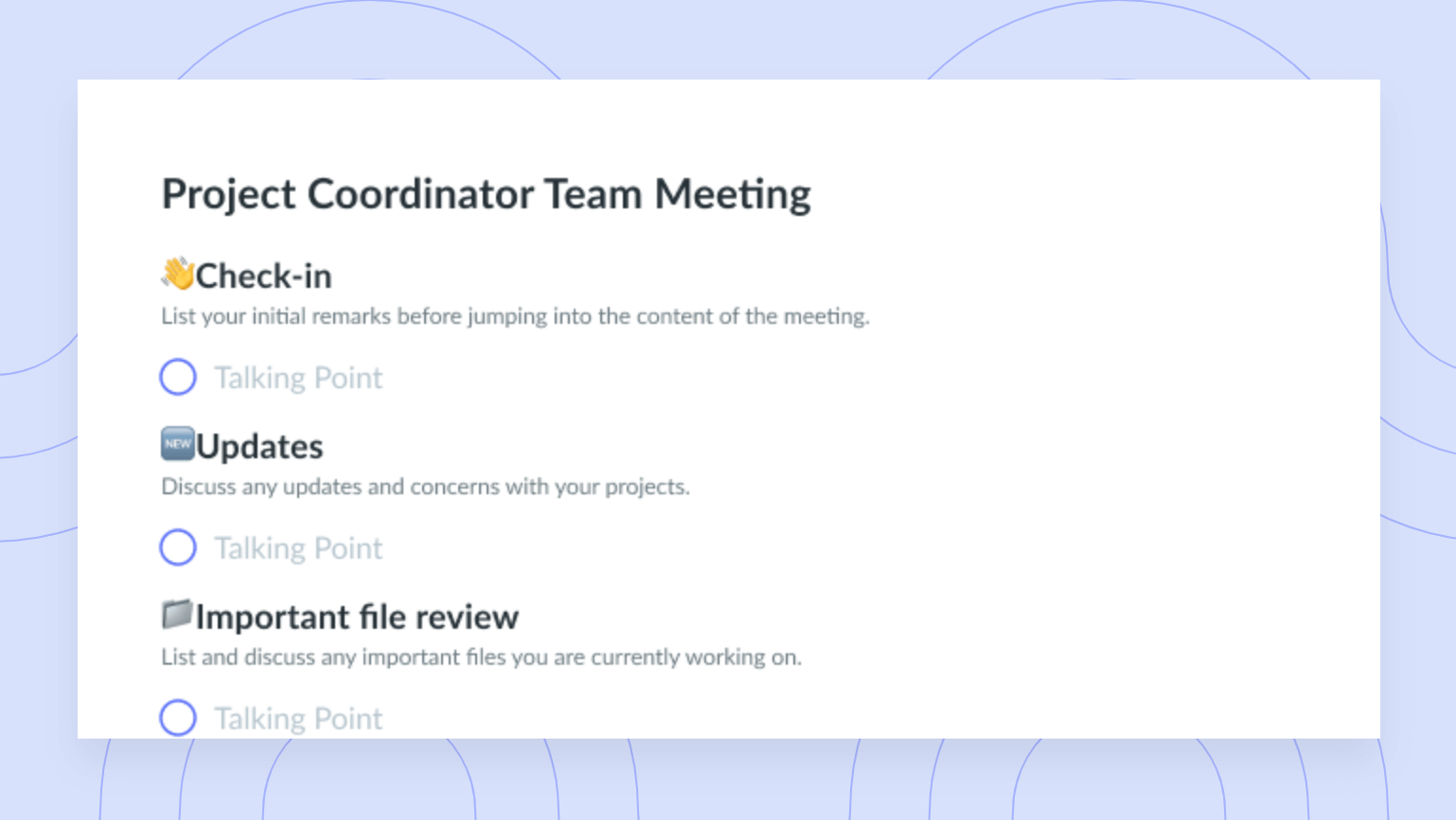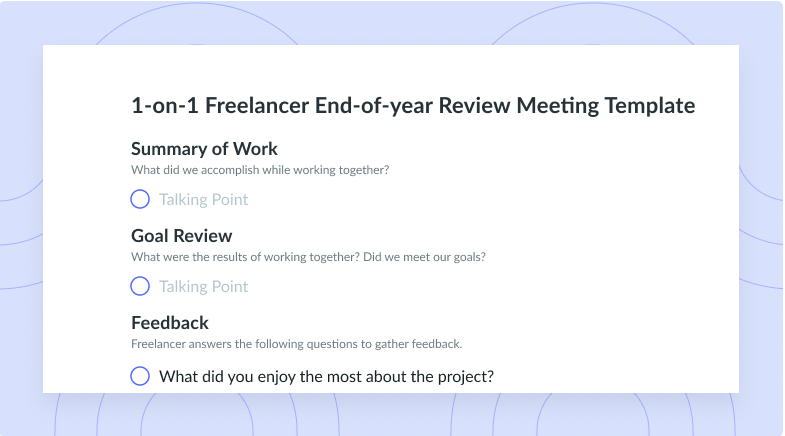How to Close a Meeting: Key Steps for Ensuring Productive Outcomes
See how you can confidently end each meeting to increase attendee participation, boost morale, and enhance the impact of your conversations.
Employees and stakeholders alike are bound to participate if you host a meeting with engaging opening remarks and an organized agenda. A strong start to any meeting indicates that the meeting has a clear purpose and will be productive.
What if we told you how you end a meeting is just as important as how you start it? Ending a meeting well can ensure attendees leave the session feeling good about the topic and know their next steps.
Read on to see why you should aim to close every meeting properly, explore how you can effectively close your meetings in seven easy steps, and view several examples of phrases you can say when you want to end a meeting on the right foot.
- Why you should properly close a meeting
- How to close a meeting in 7 steps
- Examples of what to say when closing a meeting
Why you should properly close a meeting
There comes a point in every meeting when everyone knows it’s time to wrap it up and move on. When hosting an important meeting, you may feel pressured to keep the conversation going even when it’s reached its natural end.
Dragging out a meeting can be a huge waste of your team’s time, energy, and resources. It can also negatively impact the group’s morale. Instead, ending a meeting at the appropriate time will ensure participants leave feeling good about everything the group accomplished. The end of the meeting is also the final opportunity to review what was discussed and ensure your colleagues feel prepared to complete their next action items.

Your meeting problem, solved.
Fellow is the only all-in-one meeting solution that combines AI, behavior-driving features, and seamless integrations so you can have fewer, more effective meetings and 1-on-1s.

How to close a meeting in 7 steps
- Summarize key points
- Address unresolved issues
- Clarify action items
- Include closing remarks in the agenda
- Encourage meeting feedback
- Express gratitude
- Send a post-meeting recap
1Summarize key points
When wrapping up a meeting, the first thing you should always do is quickly recap the key points from the session. Use the meeting agenda to review what the group discussed and address any unresolved issues to which the group wants to circle back. Spend at most five minutes reviewing the key meeting points and wrapping up previous conversations. If there are lingering questions or topics that certain participants must discuss, schedule a short meeting with the necessary participants or ask that certain individuals stay for a moment after the meeting ends to do so.
2Address unresolved issues
Before the meeting ends, aim to address all unresolved issues. Issues may include unclear action items, items that need clear deadlines or assignees, and more. Take a minute or two to address any topics you intended to take another look at earlier during the meeting.
If you need more time, see if you can resolve existing issues in an asynchronous format after the meeting. Asynchronous meetings allow participants to work together and collaborate at their own pace, in their own time zones. For example, if certain meeting attendees must learn to use software before proceeding with their action items, you can host an asynchronous meeting with Fellow and use our integration with Loom to add a video demo directly to your meeting notes.
Tip: Use Fellow to keep the momentum going once your meeting ends. Use our AI meeting summaries, searchable meeting minutes, automated meeting feedback, and meeting analytics to easily review key discussion points, get timely feedback from participants, and tie up loose ends.
3Clarify action items
Action items are the clearly defined tasks that attendees must complete once the meeting ends. As you wrap up the conversation, take a moment to review who must do what and by when. Each action item should be assigned to a specific person and tied to a due date. Confirm that everyone feels good about their to-dos by saying something like: “As discussed, Nate will be in charge of creating the slide deck for next week’s marketing presentation and Thomas will work on the written report. Do you have any questions before we move forward?”
If you sense there’s lingering confusion at this stage, ensure that everyone has the tools and resources they need to move forward. For example, if you assign a new member of the team a project but they haven’t been trained on a specific software, they may seem apprehensive during the meeting. A simple question such as, “Does everyone feel like they have the tools to move forward with their action items?” can solve this issue.
4Include closing remarks in the agenda
Circulating a collaborative meeting agenda in advance will keep the meeting on track to succeed. Include “closing remarks” as a topic within the meeting agenda so you remember to review action items, answer questions, and tie up loose ends before the meeting comes to a close. Including a wrap-up section of the meeting will let attendees know there will be time to clarify items and ask thoughtful questions.
Depending on the type of meeting, the host can use this time to ask attendees if they have anything to share or if there are follow-up conversations the group should have in the coming days and weeks.
5Encourage meeting feedback
Once the meeting ends, it’s important to gauge how effective the session was. Feedback allows meeting hosts and organizers to understand if their goals of conducting the meeting were met and offer a summary of attendees’ opinions. At the end of the meeting, ask if anyone has any immediate feedback to give. Give your teammates a chance to gather their thoughts by sending out a follow-up survey that they can complete after the meeting ends, too. Check out our blog on 23 questions you can ask meeting attendees to measure the success of your meetings for more inspiration.
Did you know that Fellow offers a variety of feedback features for your teammates to easily give, request, and exchange feedback about people, meetings, and projects? Our tool makes it easy to incorporate feedback into your team’s day-to-day experience and keep a history of feedback you exchange to visualize your growth over time.
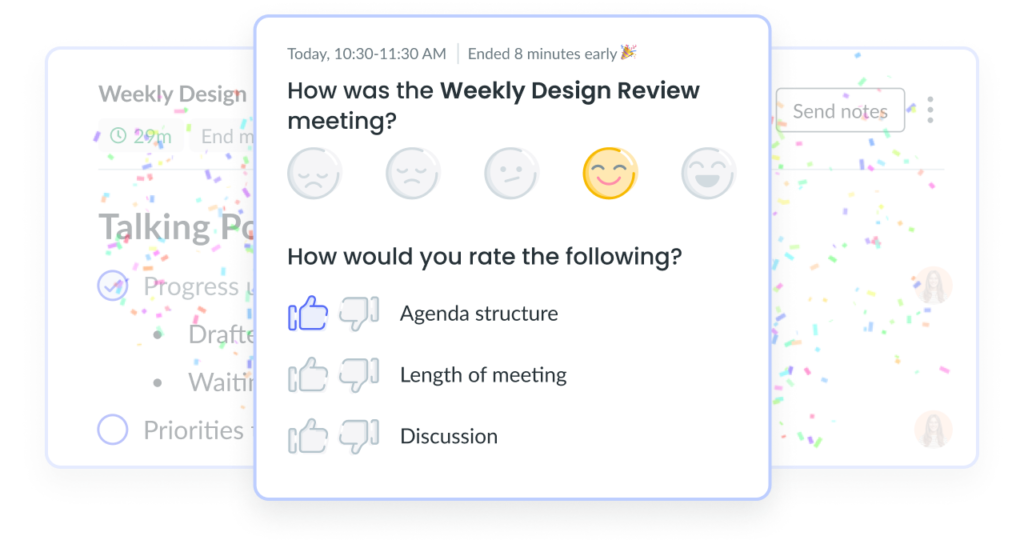
6Express gratitude
Showing appreciation is one of the best ways to strengthen your professional relationships. Don’t forget to thank all attendees for taking time out of their day to meet with you. Express gratitude by offering positive feedback or sharing an interesting joke or anecdote with the group. Thanking participants for their time and attention will help the group build positive relationships with each other and boost morale.
7Send a post-meeting recap
Sending a detailed but concise meeting recap is one of the best ways to keep everyone accountable before, during, and after each session. In your post-meeting recap, state the primary meeting goals, decisions made, action items, and talking points, and include information about the date and time of the next meeting. Attach any documents that you or other members of the group referenced during the meeting.
Use Fellow to send your next post-meeting recap. Once you’re in the right stream, select the lightning bolt icon, turn on your post-meeting recaps, and select add the first recap to set up your first automation. Then, set up a reminder that specifies how long after the meeting the recap should be sent. You can send a meeting reminder from Fellow via Slack, Microsoft Teams, or email.
Examples of what to say when closing a meeting
When closing a meeting, there are multiple ways you can do so naturally and politely. Here are some examples of phrases you can use to end your next meeting:
- “Looks like we’ve finished the meeting 10 minutes early! Great job, everyone.”
- “Thank you for the productive session, everyone. You know where to reach me if anyone has any other questions!”
- “Looks like we’ve covered everything on our agenda. Does anyone want to review any of their action items before we wrap things up?”
- “I really appreciate you taking the time to meet today! Have a great rest of your day and I look forward to seeing your progress on this project in a few weeks.”
- “Now that it’s [time], I think it’s best that we get back to our to-do lists. Thanks, everyone!”
- “I know there are some outstanding questions, so I’ll set up an asynchronous meeting for the group to discuss further. Thanks for the productive discussion today, team!”
- “I have to head to another meeting now, but thank you so much for the great discussion today!”
- “The ideas the group came up with today sound promising and I can’t wait to see the group’s work at our next meeting.”
Parting advice
How you end a meeting can be just as important as how you start it. The next time you want to wrap up a video call or in-person meeting, follow our seven steps to do so professionally. Before you know it, your meetings will be ending on time and your colleagues will be leaving every session with a clear understanding of their next steps.
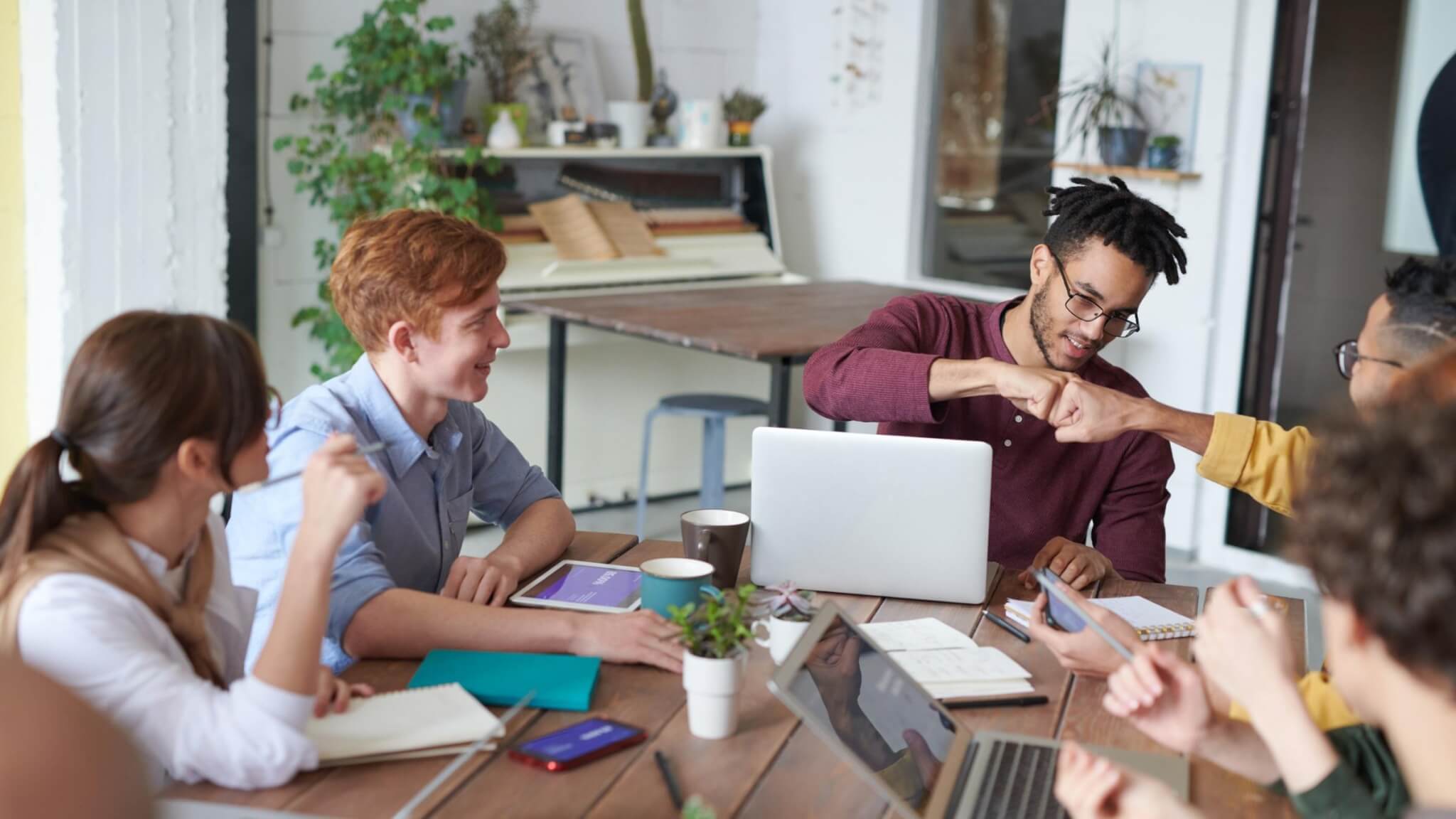


![How to Write a Meeting Recap [With Templates]](https://fellow.app/wp-content/uploads/2021/02/Meeting-Recaps.jpg)





![Incoming Client Interview [Legal Clinic] Template](https://fellow.app/wp-content/uploads/2021/09/Incoming-Client-Interview-Legal-Clinic-preview.png)


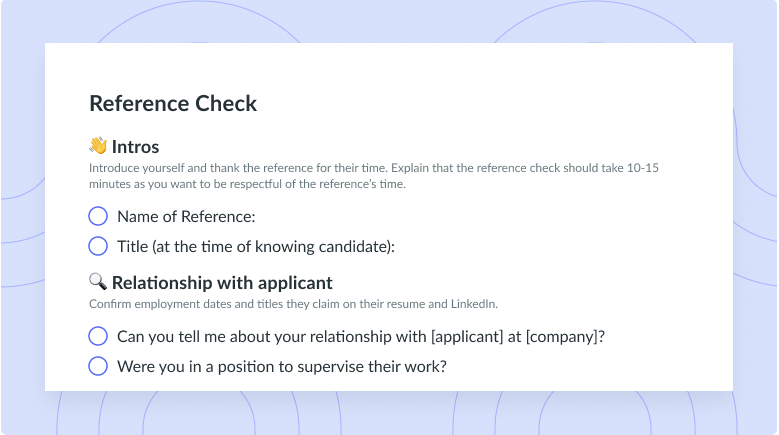
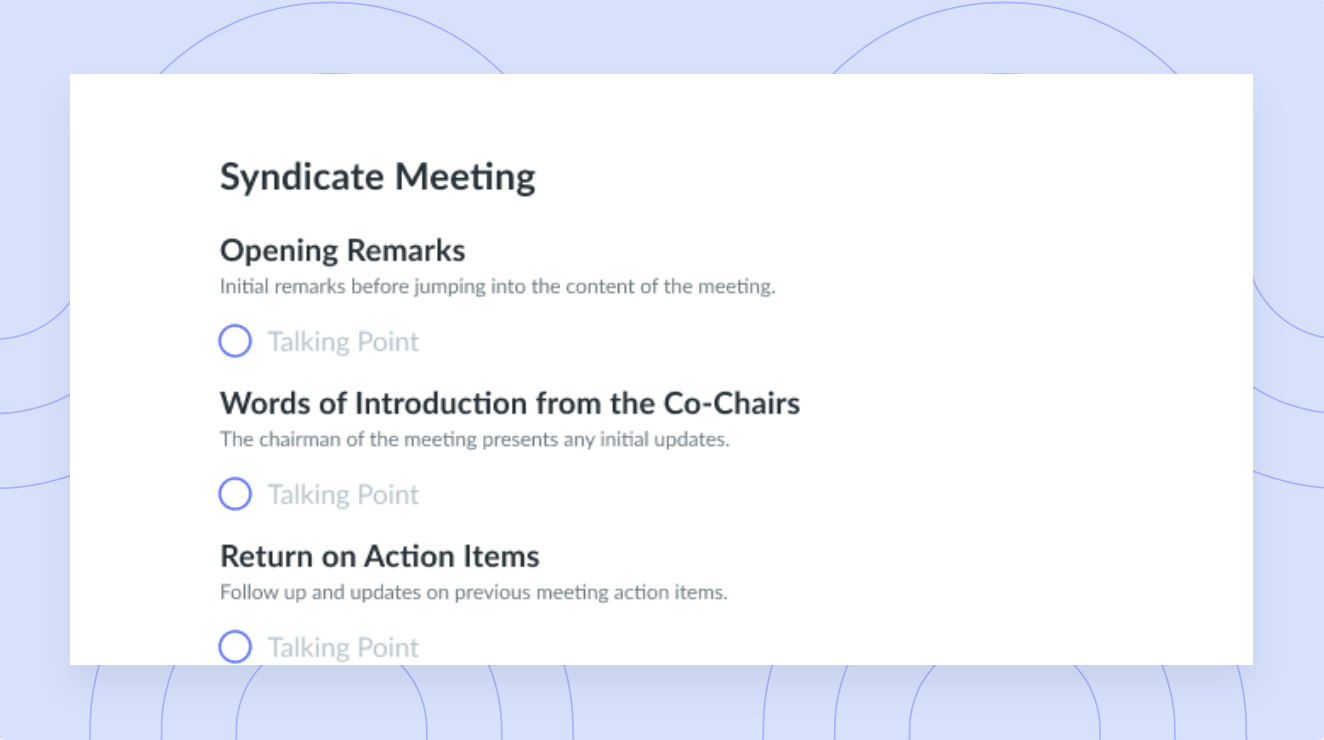
![COVID Update Meeting [Government Department] Template](https://fellow.app/wp-content/uploads/2021/09/COVID-Update-Meeting-Government-Department-preview.png)
